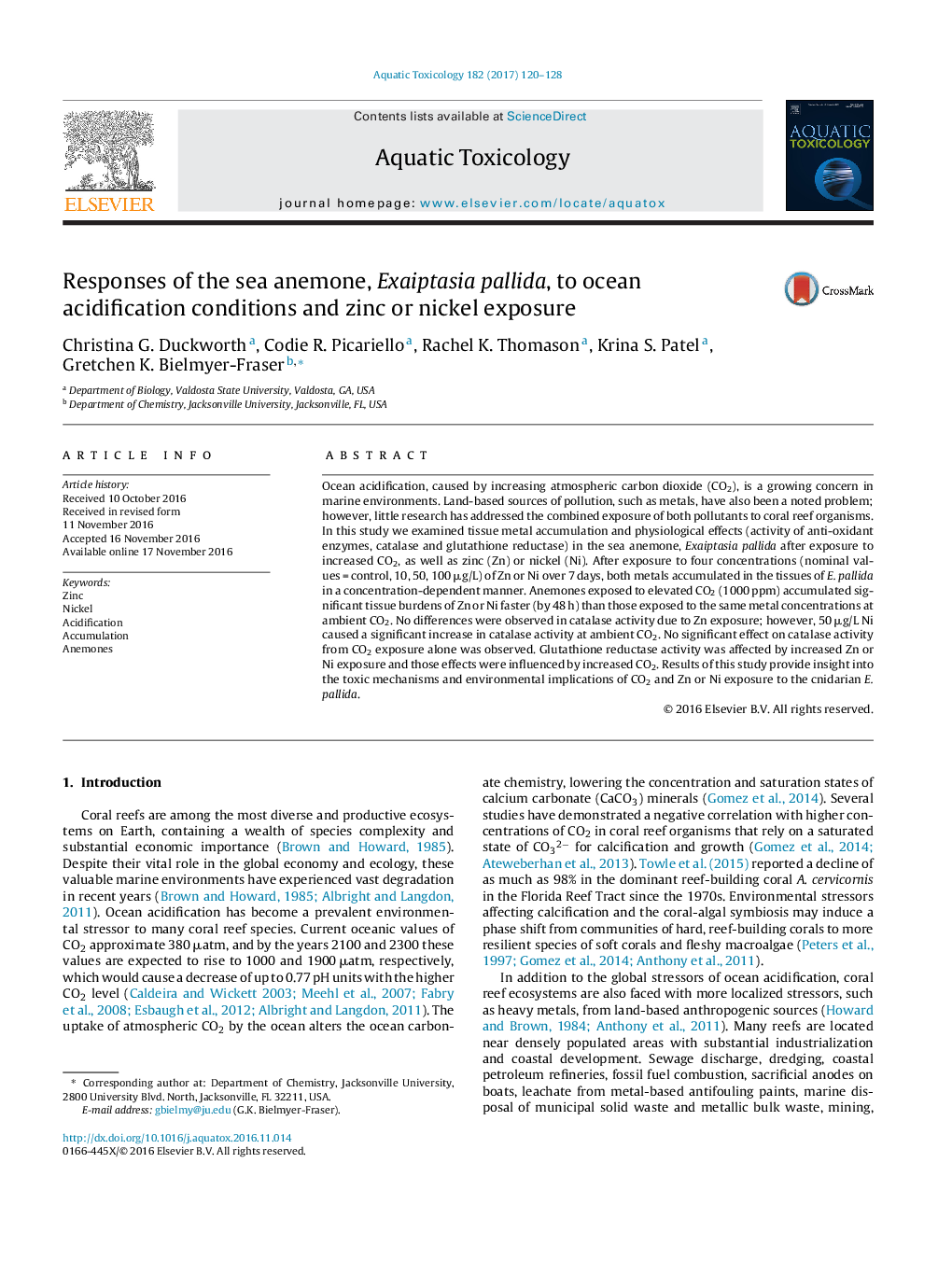| کد مقاله | کد نشریه | سال انتشار | مقاله انگلیسی | نسخه تمام متن |
|---|---|---|---|---|
| 5764346 | 1625923 | 2017 | 9 صفحه PDF | دانلود رایگان |

- Concentration-dependent Zn and Ni accumulation was observed and rate of accumulation was increased with elevated CO2 exposure.
- Both Ni and Zn were well regulated in the anemone and the effects of CO2 exposure on tissue metal concentration were no longer observed after 96Â h.
- GR activity was significantly reduced by increased Ni or Zn, and the inhibition was decreased by addition of 1000Â ppm CO2.
Ocean acidification, caused by increasing atmospheric carbon dioxide (CO2), is a growing concern in marine environments. Land-based sources of pollution, such as metals, have also been a noted problem; however, little research has addressed the combined exposure of both pollutants to coral reef organisms. In this study we examined tissue metal accumulation and physiological effects (activity of anti-oxidant enzymes, catalase and glutathione reductase) in the sea anemone, Exaiptasia pallida after exposure to increased CO2, as well as zinc (Zn) or nickel (Ni). After exposure to four concentrations (nominal values = control, 10, 50, 100 μg/L) of Zn or Ni over 7 days, both metals accumulated in the tissues of E. pallida in a concentration-dependent manner. Anemones exposed to elevated CO2 (1000 ppm) accumulated significant tissue burdens of Zn or Ni faster (by 48 h) than those exposed to the same metal concentrations at ambient CO2. No differences were observed in catalase activity due to Zn exposure; however, 50 μg/L Ni caused a significant increase in catalase activity at ambient CO2. No significant effect on catalase activity from CO2 exposure alone was observed. Glutathione reductase activity was affected by increased Zn or Ni exposure and those effects were influenced by increased CO2. Results of this study provide insight into the toxic mechanisms and environmental implications of CO2 and Zn or Ni exposure to the cnidarian E. pallida.
Journal: Aquatic Toxicology - Volume 182, January 2017, Pages 120-128